A few years ago I took pictures of a rare encryption device from the Cold War era. Can a reader help to find out more about it?
Every second year crypto history enthusiasts gather for the Symposium on Cryptologic History in Fort Meade near Washington, D.C. Organized by the NSA this event is the largest and most important crypto history meeting in the world.
I have taken part in the Symposium on Cryptologic History as a speaker four times in a row. It was a great experience each time. Now I’m looking forward to the 2017 edition of this event, which will take place on October 19 and 20. For the first time I will give two presentations – one about Western-German Cryptology in the Early Cold War, the other one about The Use of Steganography in World War I.
The CD-57
In the talk about Western-German Cold War cryptology I will mention the CD-57, a hand-held encryption device from the late 1950s. It was produced by Boris Hagelin’s Crypto AG in Switzerland (for more information check the Cryptomuseum website).
The Germans used this device during the early Cold War. It was built under licence by German manufacturer Rudolf Hell in Kiel as the STG-61.
A rare CD-57 variant?
To prepare my talk I reviewed a number of photographs I had been allowed to take at the German Information Security Authority BSI in Bonn in 2010. The BSI has a very interesting cipher machine collection. I am thankful that I received permission to take pictures of it. To my regret, the BSI doesn’t have an expert who is familiar with these vintage cipher machines. Contrary to the NSA (which is some orders of magitude larger), the BSI doesn’t operate a history department.
Some of the BSI photos show a device that ressembles the CD-57 but has a completely different display.
On the front side of the device there’s a metal sheet bearing letter sequences:
Apparently, there are several metal sheets to choose from. The picture above shows one labeled “1 D”, while the following one bears the inscription “1 C”:
On the “1 B” and “1 C” sheets the letters are written in random sequences. The standard sheet represents a Vigenère table (the alphabet shifted by one letter each line).
I have no idea how this device works. Especially, I don’t know what happens when the metal button on the left side is pushed.
Who knows more about this device?
I have never seen a device of this kind somewhere else. Is it really a CD-57 variant or does it work differently? If you know more, please let me know.
Follow @KlausSchmeh
Further reading: A little known encryption machine that could have changed the course of history
Linkedin: https://www.linkedin.com/groups/13501820
Facebook: https://www.facebook.com/groups/763282653806483/

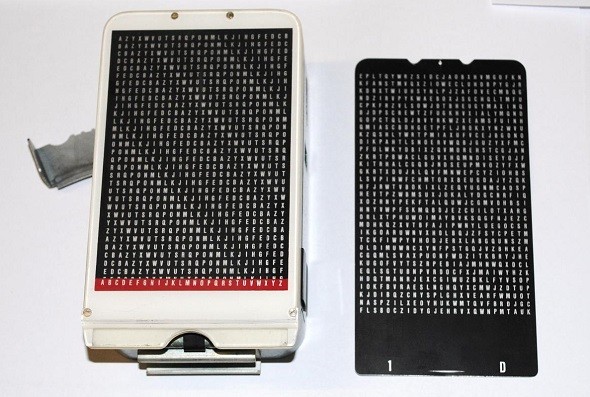
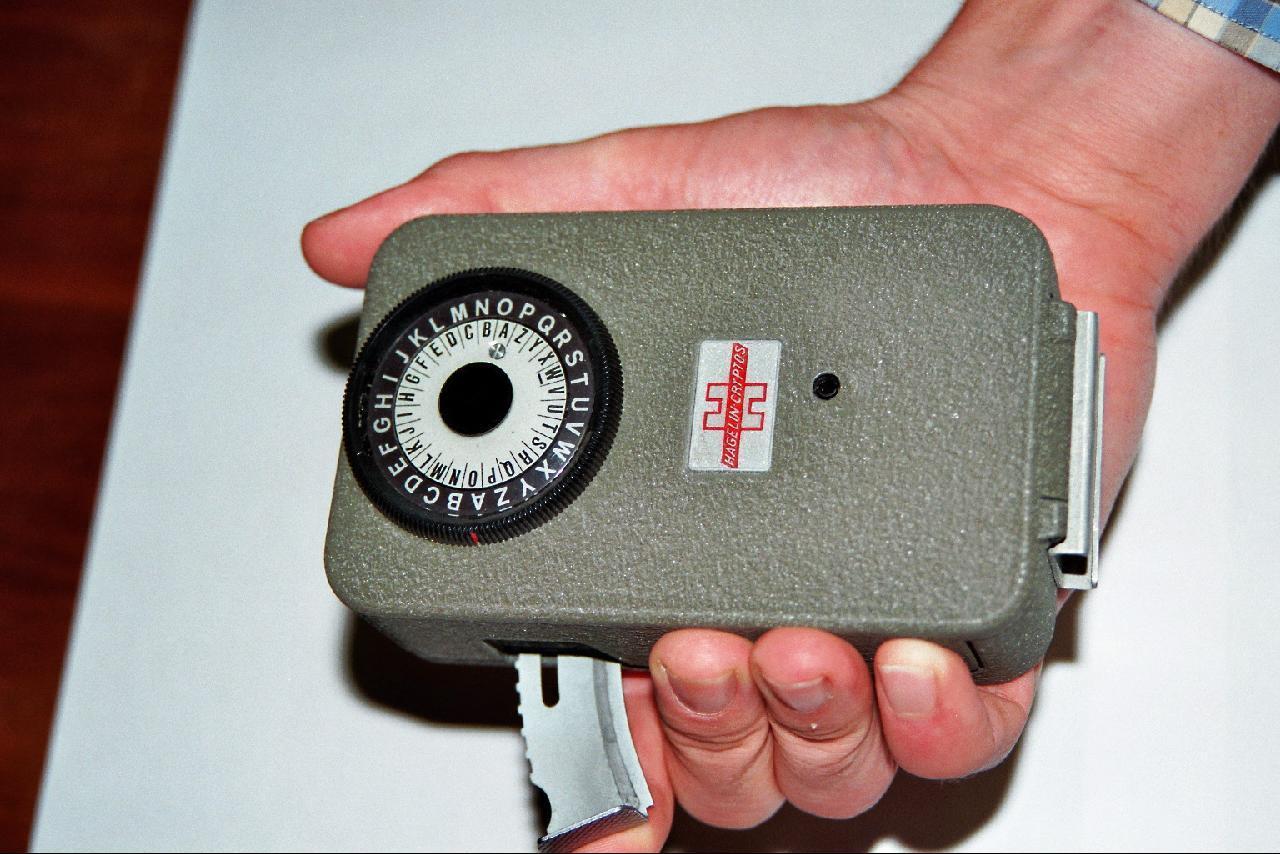
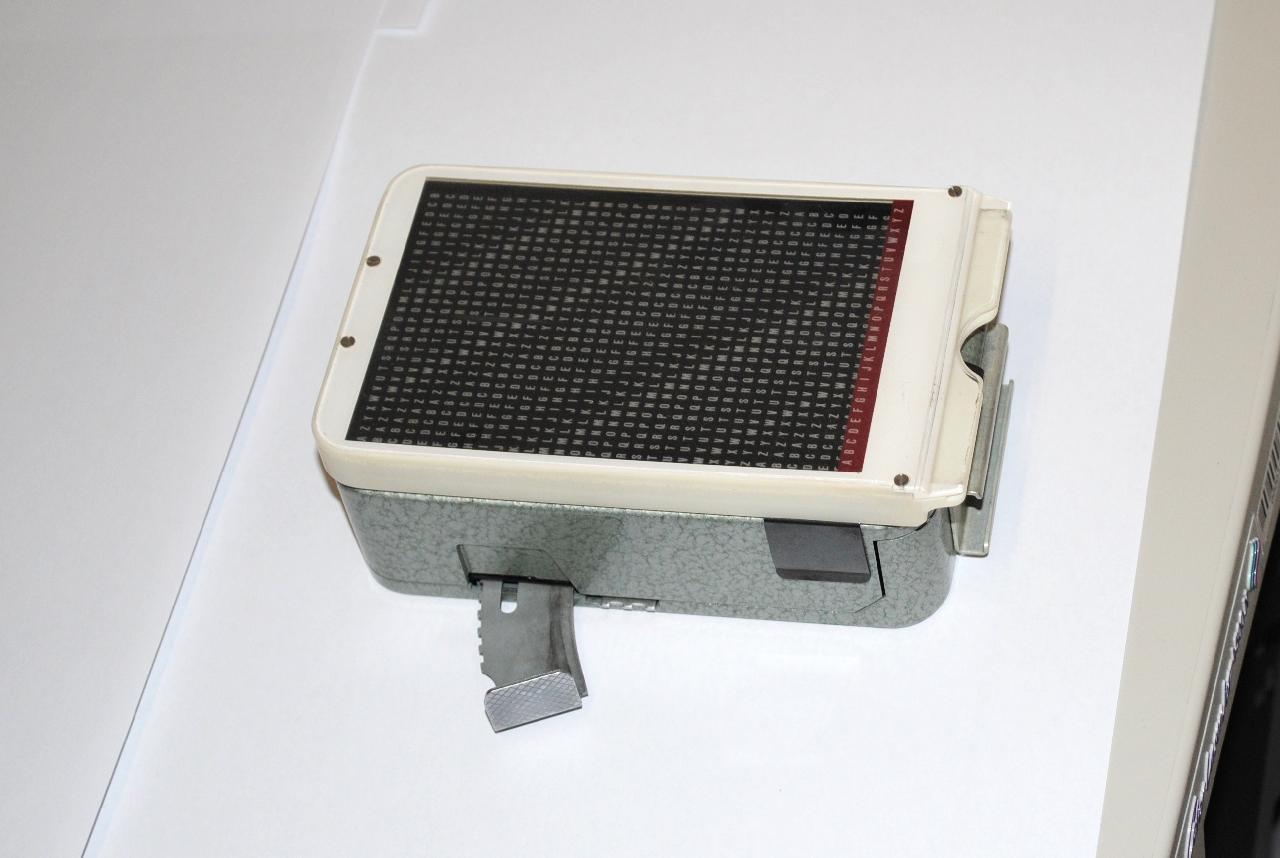
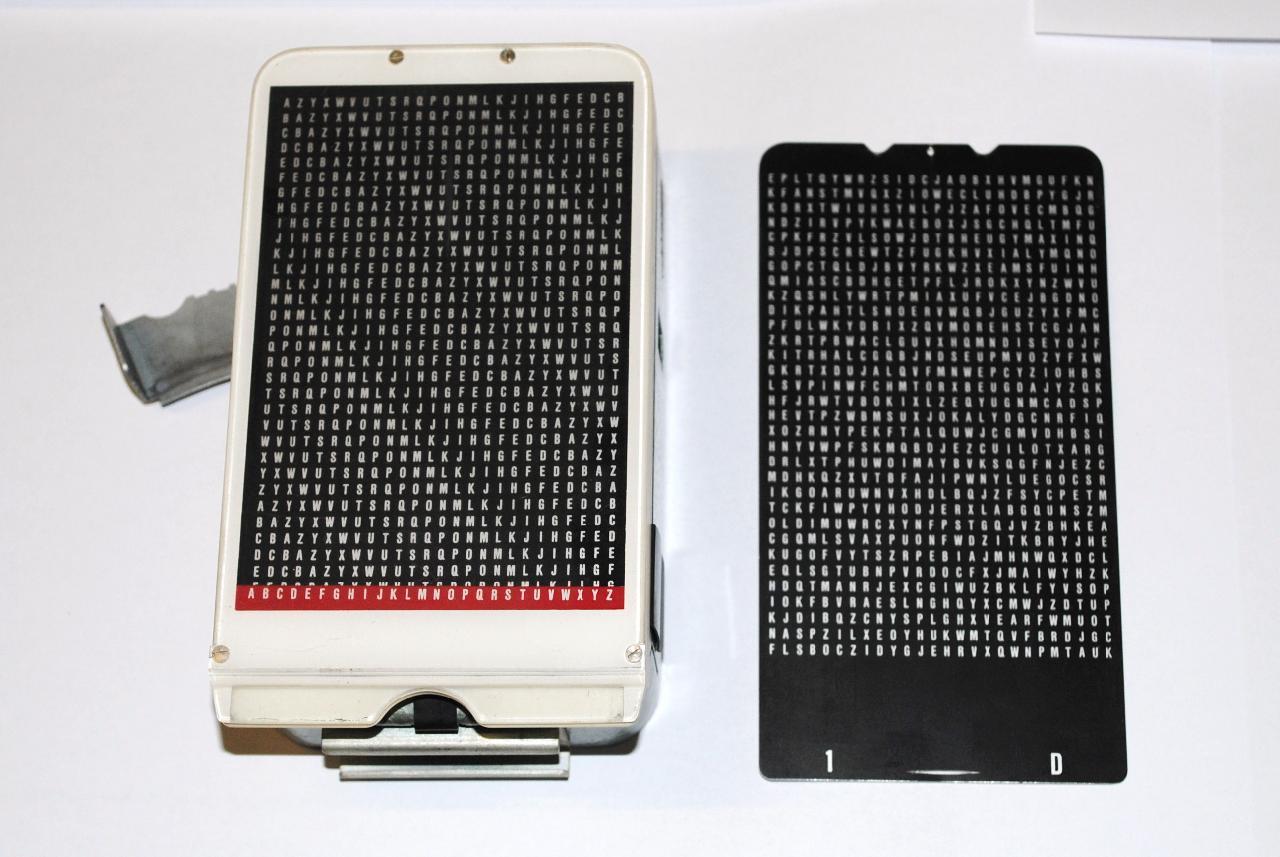
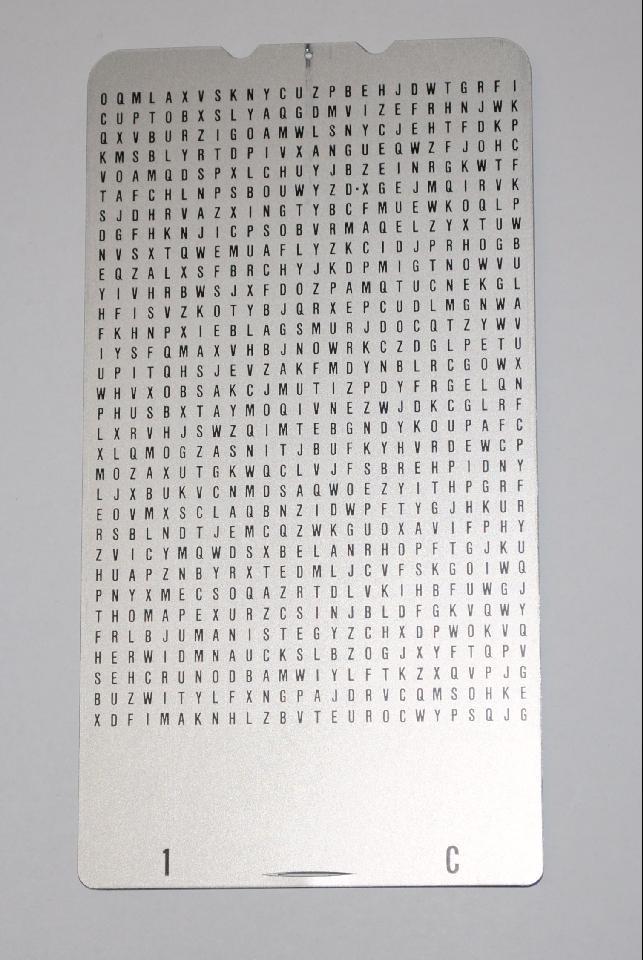
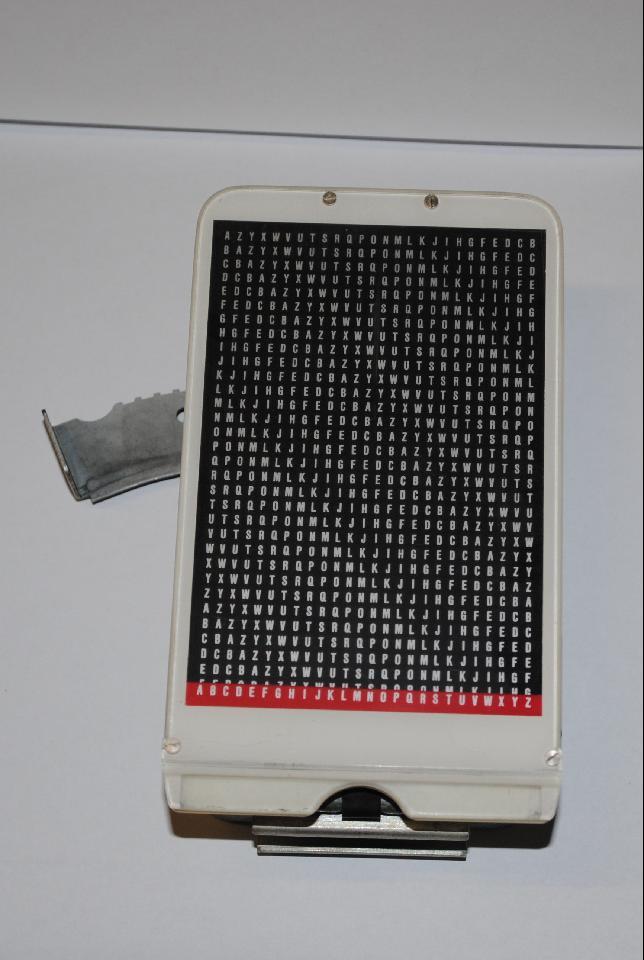

Kommentare (6)